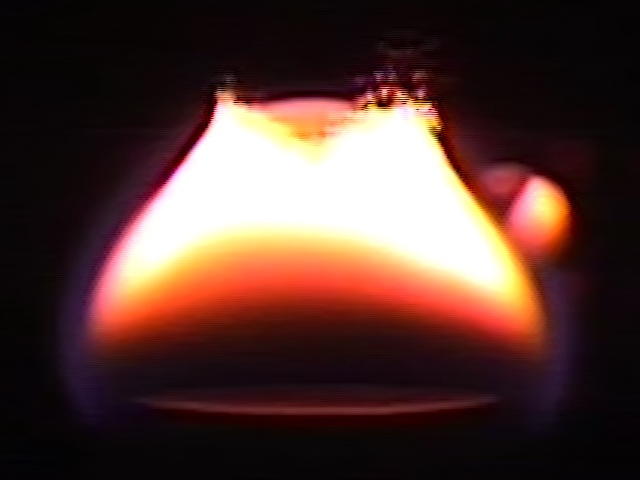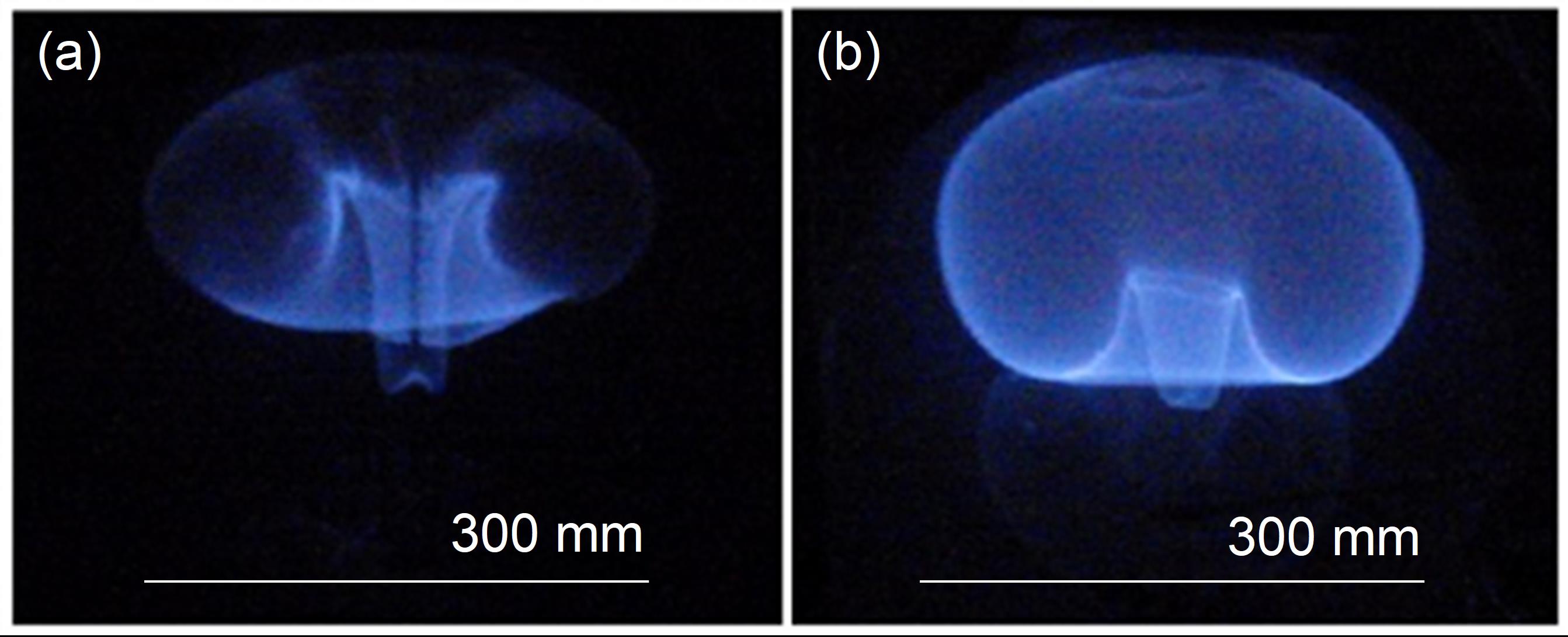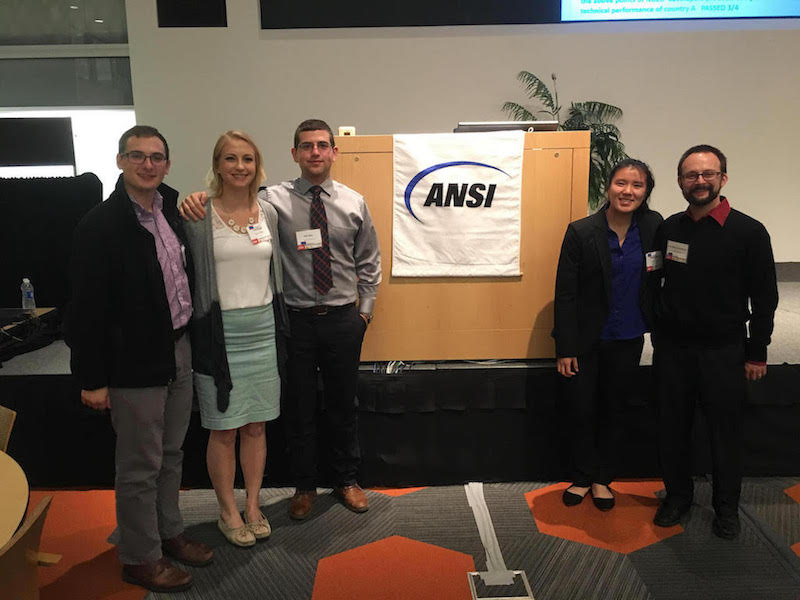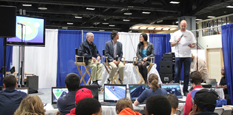News Story
FPE Professor Peter Sunderland Designated PI on Upcoming NIST and NSF Projects
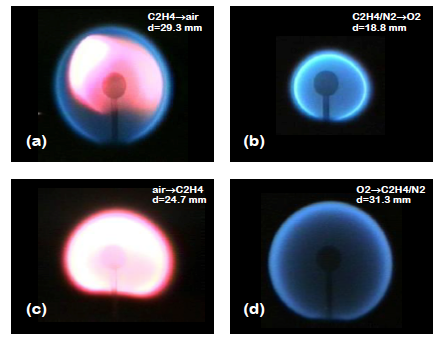
Color images of spherical flames (a) – (d) at the end of 2 second drop tests. The C2H4/N2 mixtures have a C2H4 mole fraction of 0.080. The scale is revealed by the 6.4 mm spherical burner. Image provided by Dr. Sunderland.
On August 3, the Department of Fire Protection Engineering at the University of Maryland received one of twelve grants awarded by National Institute of Standards and Technology (NIST) for the sole purpose of mitigating disasters. Peter Sunderland, FPE Professor and PI on the Project entitled, “Temperature Measurements of Airborne Firebrands,” will use the funding to study the wildland urban interface (WUI). Wildfires have become a huge problem in the U.S. Indeed, the federal government spends over $1 billion every year in suppression costs. A better understanding of firebrands (i.e. pieces of burning wood), which are the main reason these fires continue to spread and burn out of control, could significantly mitigate wildland fire destruction. Size and temperature are significant attributes of firebrands, although their temperatures have not yet been studied.
“An improved understanding of firebrand temperature is crucial to understanding the viability of firebrands to ignite spot fires,” Sunderland stated in his NIST proposal. “If the temperatures of airborne firebrands can be measured easily and accurately in laboratories and in wildland fires, the [data obtained] could be transformational,” providing improved fire resistance to communities in WUI areas (e.g. northern California and Montana, where developed areas mix with natural areas). This NIST proect will begin August 15.
Over the summer, Sunderland was also informed of his receipt of funding for a National Science Foundation (NSF) project. This project, also supported by NASA ACME (Advanced Combustion via Microgravity Experiments) and the Center for the Advancement of Science in Space (CASIS), will study cool diffusion flames (CDFs) – a phenomenon first observed aboard the International Space Station (ISS) in 2012.
“Cool diffusion flames aren’t very hearty, and require very special conditions to ignite and continue burning,” said Sunderland. “On Earth, buoyancy sweeps the gases away before a cool diffusion flame can establish itself. This is where a microgravity environment will be key. CDFs probably require large fuels like propane or butane, but no one knows…. yet.”
The conditions necessary for CDFs to ignite and burn consistently will be studied aboard the ISS over a three-year period beginning September 1. The data collected will yield valuable insight into cool flame chemical kinetics and, hopefully, aid in the development of cleaner, more efficient internal combustion engines – currently a huge driver of pollution and the so-called ‘greenhouse effect.’
Related Media:
NSF and CASIS Announce 3 Selected Projects from Combustion and Thermal Transport Funding Opportunity Onboard ISS - August 9, 2017 (CASIS)
Gravity's grip on heat and fire to be studied in space - August 9, 2017 (NSF)
UMD Experiments Launched into Orbit on SpaceX Capule - June 6, 2017 (UMD)
Published August 9, 2017
